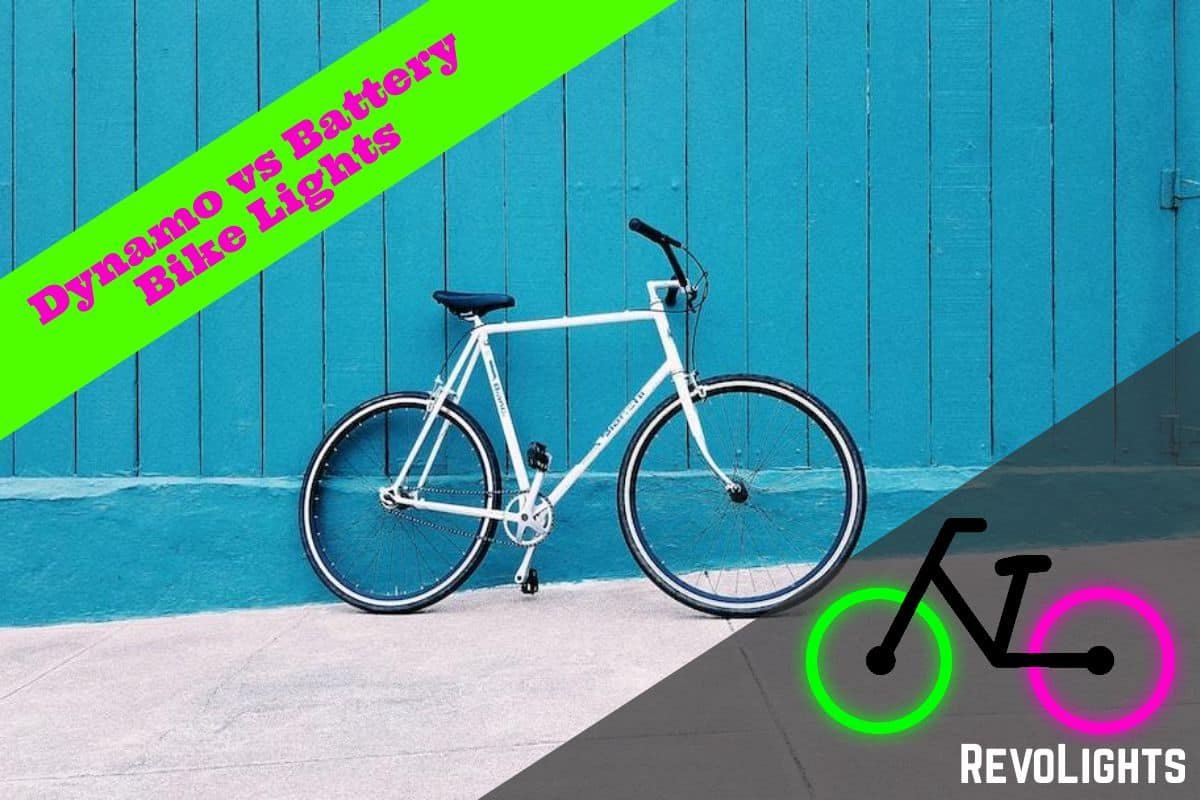Bicycle lighting is an extremely important part of your overall bicycle riding experience. Whether or not you have quality lights is akin to understanding how well your bike works as a whole. If you don’t have quality light, your nighttime riding experience will be suboptimal at best and extremely dangerous at worst. The same can be said with your bike chain and handlebars. The only difference is that your light can be unattached from your bike. Regardless, it is instrumental in how well your bike works.

In this article, we’ll go over a few different options that you have when it comes to lighting the path before you no matter if you are in the city, suburbs, or rural locations.
Battery-powered bicycle lights
These are the most common types of bicycle lights that you will see in any store. They are detachable via a clamp or strap and are powered through either a USB connection if they are rechargeable or separate alkaline batteries if they are not.
Pros of battery-powered lights
Battery-powered lights are universal and can work on all bikes. They can be attached from the side or on the back or really anywhere that they need to be attached in order for you to have the best bicycle riding experience possible. They can also be interchanged with other bikes quickly in order to make use of them if you only have one set of lights. This is great use as one bike could have a flat tire, so switching the light to another bike is ideal.
Batter-powered lights are also relatively affordable, so there isn’t much of an excuse to invest in a front and rear light package. Additionally, the power of a battery-powered light is reliant on the energy it gets from the battery and not on your own movement. These lights can be optimized towards your needs depending on whether you are located in more well-lit locations like urban environments or extremely dark locations like rural locations.
Finally, in the case of rechargeable batteries, they can be recharged over and over again for a few hundred cycles, which can save riders a lot of costs in terms of money and is also extremely environmentally friendly to use as a result.
Cons of battery-powered lights
While headlights can last up to twenty hours on a charge, headlights can last anywhere from one to ten hours on a single charge, depending on the brightness that they are currently set. Additionally, riders run the risk of losing the USB cord for recharging into the power outlet or forgetting that they need to charge the battery altogether. If either of these happens, that could force them to turn around and make the treacherous journey back home without a headlight to guide them.
In the case of single-use alkaline batteries, charges may last anywhere from eight to twelve hours but can prove costly over time and have a recycling process that is not exactly very environmentally friendly.
Finally, many battery-powered lights are brighter at the center of the light, which can prove distracting for oncoming vehicles and other bike riders. This actually increases the chances of getting into an accident in more urban locations where other riders might be blinded by the light.
Dynamo lights
A dynamo bike light is a hub that consists of magnets and coils that create a current when the rider causes the wheel to spin past a certain RPM (rotations per minute). The hub itself is wired to a headlight (and alternatively, it can be wired to a taillight) and mounted with screws and brackets. This makes them permanently attached to the bicycle – well, perhaps not permanently, but they are intended to remain on one bicycle. In this way, the dynamo light acts as a consistent light generator source for the bicycle with a capacitor that allows the light to keep running even when the wheel is not in motion.
Pros of dynamo lights
Dynamo lights have an unlimited running time as they are powered by the individual riding the bike. Unlike battery-powered lights that need to be recharged or rely on separate batteries, these lights utilize the current generation technology in order to power the lighting. This is ideal for those who don’t want to think about the power supply of their bike and wish to simply ride it and have good lighting when they need it.
Dynamo lights also have a stronger optic pattern because they are screwed onto the bike itself in the upright position that they need to be in. The coverage in these lights is more consistent than battery-powered lighting primarily because the dynamo light has a more broad coverage as opposed to a central beam.
In addition to all the bonuses of not having to worry about additional wires and single-use batteries, dynamo lights are also extremely environmentally friendly, as you don’t have to worry about how they are recycled in order to have the least impact on the planet.
Cons of dynamo lights
Dynamo lights are quite expensive, primarily because of a front wheel upgrade that will likely cost several hundreds of dollars to customize. Dynamos are not easy to remove because they are built specifically for the front wheel that has the dynamo hub. Therefore, it is impossible to just move the light over to another bike as the other bike won’t have the same dynamo hub customization.
Many dynamo lights also require a minimum speed in order to deliver full brightness. This might be difficult for urban riders that need to weave around vehicles that could be stopped at intersections or deal with slower-moving vehicles in front of you.
« What Batteries Do Bike Lights Take?
Lux vs Lumens on Bike Lights »
Regardless of whether you choose to use a battery-powered light or a dynamo-powered light, you will have some pros and cons to consider. If you are looking at a bike that you would like to keep for years into the future, getting a dynamo-powered light could save you money down the line. On the other hand, a battery-powered rechargeable light might be exactly what you need if you are looking for a more budget-friendly solution.
Lights are critical to the proper functioning of bikes at night. Carefully consider the pros and cons of dynamo and battery-powered bike lights in conjunction with your optimal bike riding experience.




